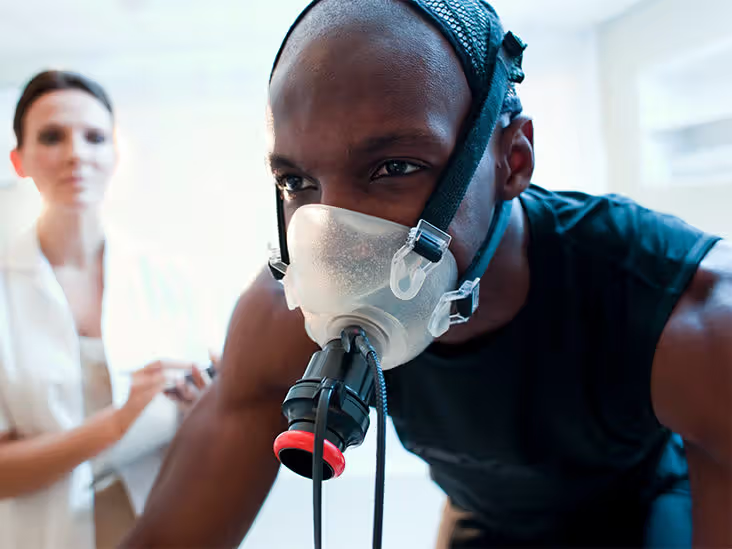What is VO₂ Max?
VO₂ max is a measure of how much oxygen your body can use during exercise. The more oxygen your body can process, the better your endurance and performance in activities like running, swimming, and other cardio workouts.
When you breathe in, your lungs take in oxygen and turn it into energy (ATP), which powers your cells. At the same time, your body gets rid of carbon dioxide when you exhale. A higher VO₂ max means your body is more efficient at using oxygen, helping you perform better in endurance activities.
Who Should Work on Improving Their VO₂ Max?
VO₂ max is often used to gauge athletic performance, especially for runners and swimmers. But it’s not just for athletes! It’s also a great indicator of overall heart and lung health. Doctors and fitness professionals use it to assess cardiorespiratory fitness in anyone, not just elite athletes.
In fact, research shows that a higher VO₂ max is linked to a lower risk of health issues and even a longer life. So, no matter your fitness level, improving your VO₂ max can benefit you.
How is VO₂ Max Measured?
VO₂ max is usually tested in labs, hospitals, or by fitness professionals. There are two main types of tests:
- Submaximal Tests – These are done at around 75-85% of your maximum heart rate and don’t push you to full exhaustion.
- Maximal Tests – These push you to your limits and give the most accurate results.
Some common VO₂ max tests include:
- Astrand treadmill test
- 2.4 km run test
- Multistage bleep test
- Cooper 1.5-mile run test
- Rockport 1-mile walk test
Your doctor or trainer may recommend a specific test based on your fitness level.
What is a Good VO₂ Max?
Your VO₂ max depends on several factors, including:
- Age
- Gender
- Fitness level
- Altitude (sea level vs. high elevation)
While you can’t control factors like age and gender, you can improve your fitness level to boost your VO₂ max.
How Can You Improve Your VO₂ Max?
VO₂ max naturally declines with age, but the good news is that you can slow down this process by staying active. A 2016 study found that even occasional high-intensity workouts can help.
Here are some effective ways to improve your VO₂ max:
- High-Intensity Interval Training (HIIT): Alternate between short bursts of intense exercise (like sprinting or cycling) and lower-intensity recovery periods.
- Mix Up Your Cardio: Try different activities in one session—cycle for a while, then swim, then run. This keeps your body challenged.
- Do Any Cardio Exercise: While high intensity works best, even regular moderate exercise (as long as it’s more than just a stroll) can improve your VO₂ max over time.
By incorporating these strategies into your routine, you can keep your heart and lungs strong and improve your endurance.




